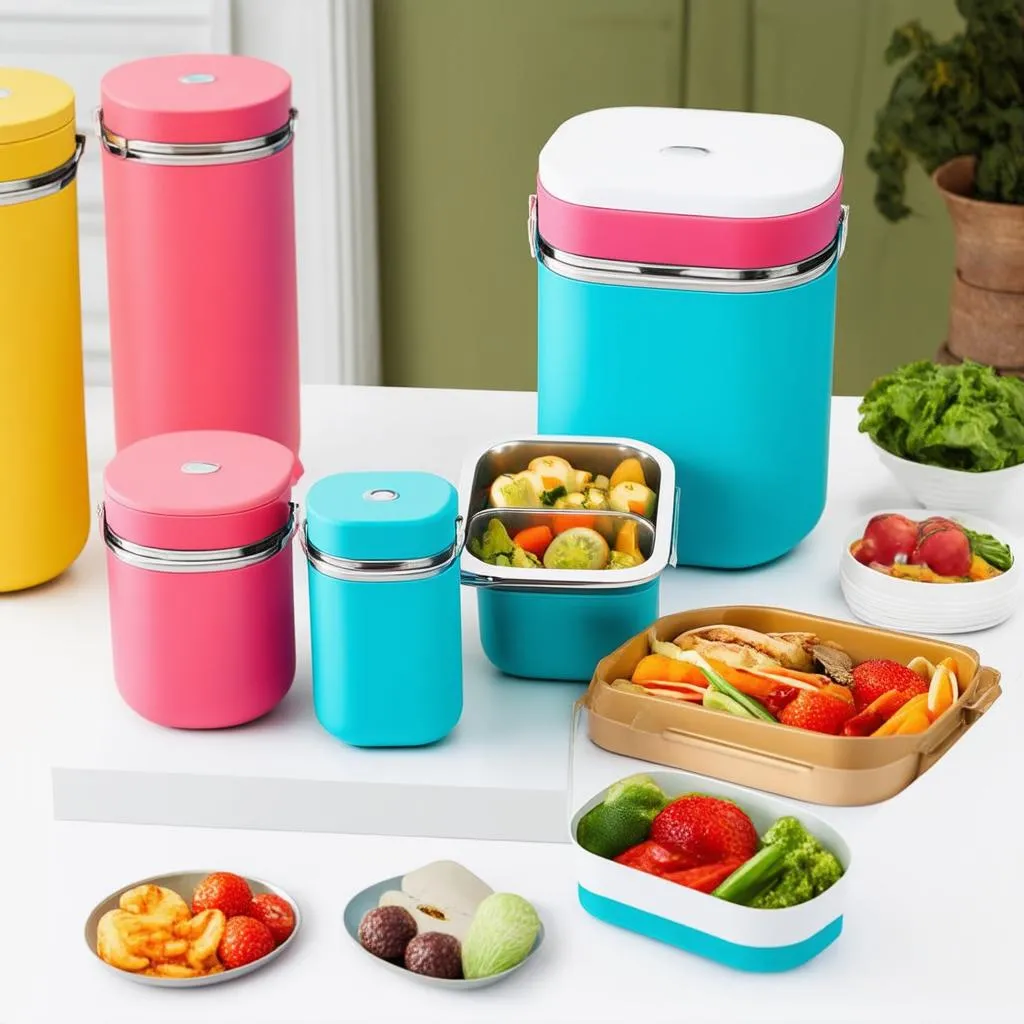Picture this: you’re on a scenic road trip through the Scottish Highlands, the rugged landscape unfolding before you like a breathtaking painting. You’ve packed a delicious homemade picnic to enjoy amidst the dramatic scenery, but there’s just one problem – how do you keep your food hot until you reach that perfect spot?
Whether you’re a seasoned traveler or planning your first adventure, keeping your food warm on the go can be tricky. But don’t worry, fellow foodies! This comprehensive guide will equip you with all the tips, tricks, and essential gear to ensure every meal, from piping hot soups to savory stews, stays at the perfect temperature, no matter where your journey takes you.
Essential Gear for Hot Food on the Go
Before we delve into the techniques, let’s talk about the tools that will become your trusty companions on your culinary adventures:
1. Insulated Food Containers: Investing in a high-quality insulated food container is a game-changer. These containers are designed to keep food hot (or cold) for hours, thanks to their double-walled vacuum insulation. Look for options with wide mouths for easy serving and leak-proof lids to prevent any unfortunate spills in your backpack.
2. Thermoses: For individual servings of hot beverages like coffee, tea, or even soup, a reliable thermos is indispensable. Just like insulated food containers, they rely on vacuum insulation to maintain the desired temperature for extended periods.
3. Portable Food Warmers: If you’re traveling with access to electricity, consider a portable food warmer. These handy devices plug into your car’s cigarette lighter or a standard outlet, allowing you to reheat your meals on the go.
4. Insulated Bags: An insulated bag is essential for carrying your food containers and thermoses. They provide an extra layer of insulation, keeping your food hot for longer, especially on chilly days or during long journeys.
5. Aluminum Foil: Good old-fashioned aluminum foil can work wonders in a pinch. Wrap your hot food tightly in several layers of foil to help trap heat and slow down the cooling process.
 Insulated food containers
Insulated food containers
Clever Techniques to Keep Your Food Piping Hot
Now that you have your gear sorted, let’s explore some clever techniques to maximize heat retention:
1. Preheat Your Containers: Before filling your insulated containers, preheat them by filling them with boiling water for a few minutes. This will create a warm environment inside, helping your food stay hot for longer.
2. Cook Food Thoroughly: Ensure your food is cooked thoroughly before packing it. This not only ensures food safety but also helps retain heat better.
3. Pack Food While Hot: Transfer your food to the insulated containers while it’s still piping hot. This minimizes heat loss during the transfer process.
4. Minimize Opening Containers: Resist the urge to peek inside your containers frequently. Every time you open them, heat escapes, so try to limit opening them until you’re ready to eat.
5. Utilize Heat Packs: For extra warmth, consider using heat packs specifically designed for food. These can be slipped beneath or around your food containers to provide additional heat retention, particularly useful in colder climates.
Planning Your Culinary Journey: Tips for Different Travel Scenarios
The best way to keep your food hot while traveling largely depends on your chosen mode of transport and the length of your journey. Here are some scenario-specific tips:
Road Trips
- Pack a cooler with ice packs to keep your food cold until you’re ready to heat it up.
- Invest in a portable stove or grill for reheating meals at rest stops or campsites.
- Utilize your car’s heater during colder months to create a warm environment inside the vehicle.
 Enjoying a road trip meal
Enjoying a road trip meal
Camping Adventures
- Pack non-perishable food items that don’t require heating, such as trail mix, granola bars, and dried fruit.
- If you’ll have access to a campfire, bring along pots and pans for cooking over an open flame.
- Consider using a portable solar oven for eco-friendly cooking during daylight hours.
Airplane Travel
- Check with your airline about their policies on carrying hot food and beverages.
- Opt for food items that are easy to transport and consume on the go, such as sandwiches, wraps, and salads.
- Pack reusable water bottles and fill them after passing through security checkpoints.
FAQs: Answering Your Burning Questions
Can I pack hot soup in a thermos?
Absolutely! Thermoses are excellent for keeping soups and other liquids hot for hours. Just make sure your thermos is specifically designed for hot beverages and that you preheat it with boiling water before filling it.
How long will food stay hot in an insulated food container?
The duration varies depending on the quality of the container and external factors like ambient temperature. However, a good-quality insulated container should keep your food hot for 4-6 hours on average.
What are some good food options for traveling with kids?
When traveling with little ones, pack kid-friendly foods that are easy to eat and less likely to make a mess, such as:
- Sandwiches cut into fun shapes
- Fruit skewers
- Yogurt pouches
- Crackers and cheese cubes
Conclusion
Keeping your food hot while traveling doesn’t have to be a logistical nightmare. With the right gear, clever techniques, and a little planning, you can enjoy delicious, warm meals wherever your adventures take you.
For more travel tips, destination guides, and culinary inspiration, be sure to explore the wealth of resources on travelcar.edu.vn. Happy travels and bon appétit!